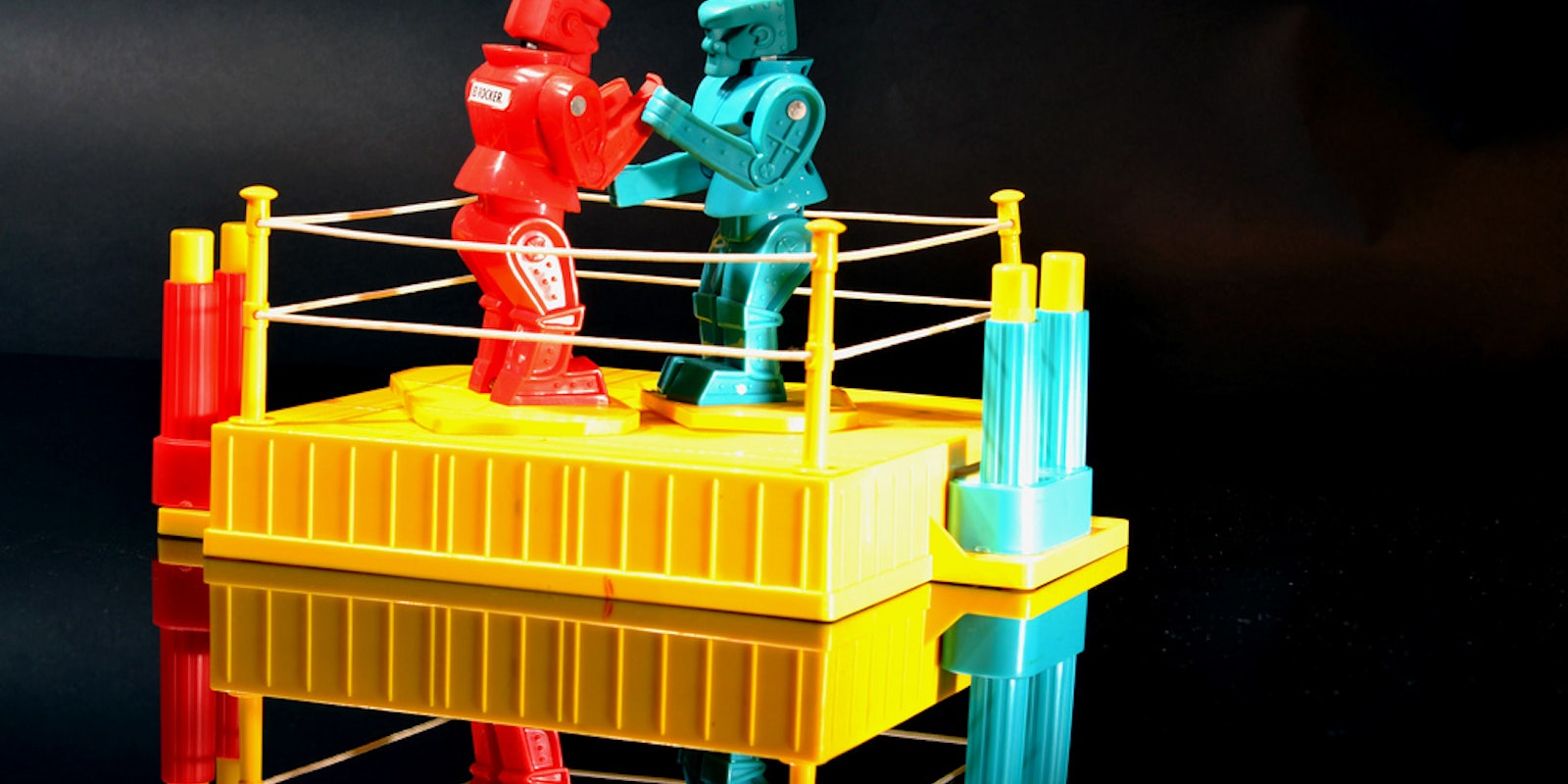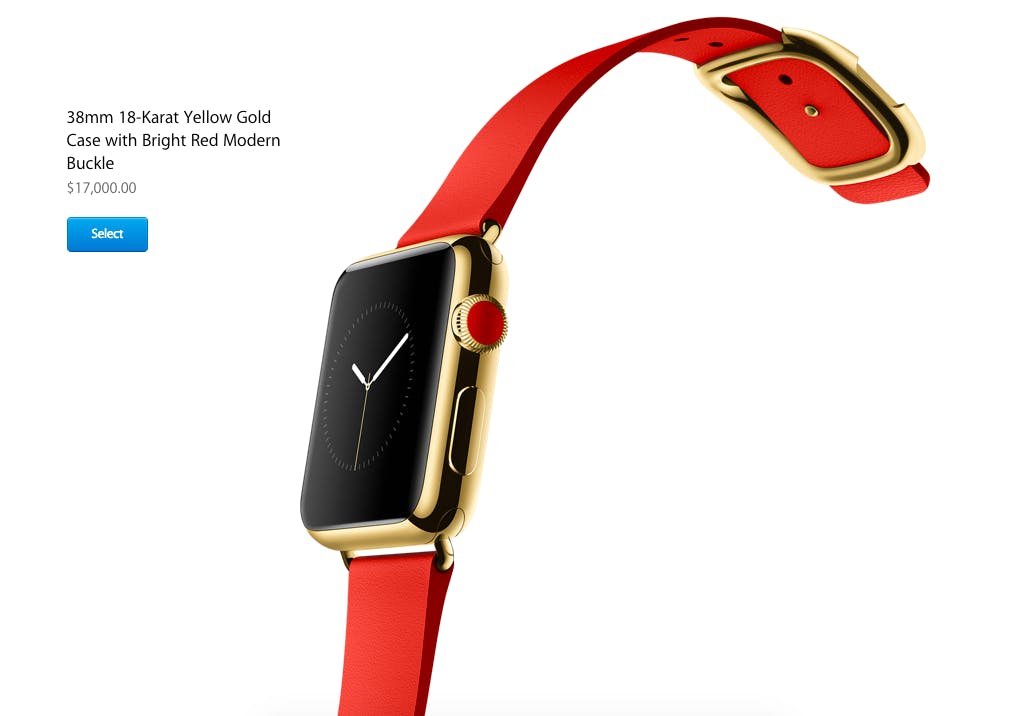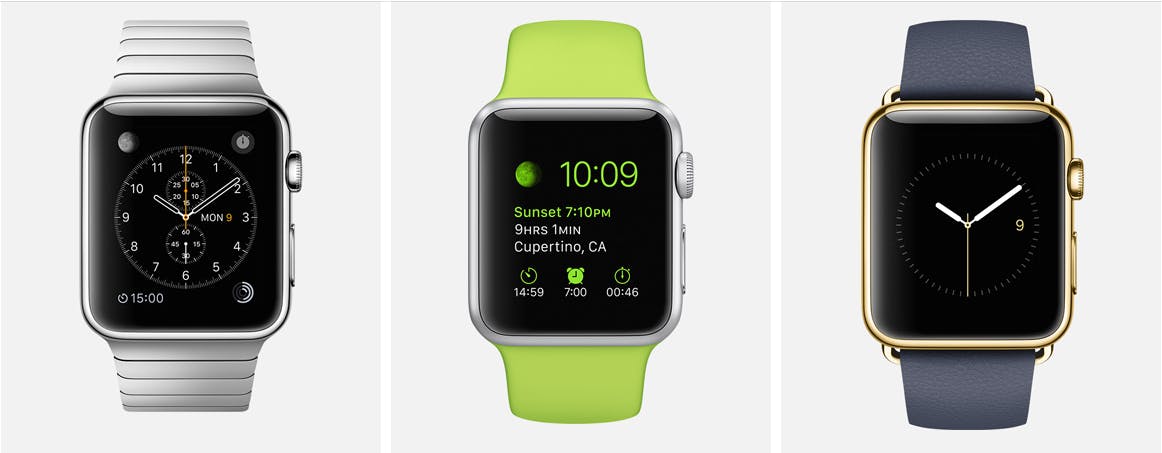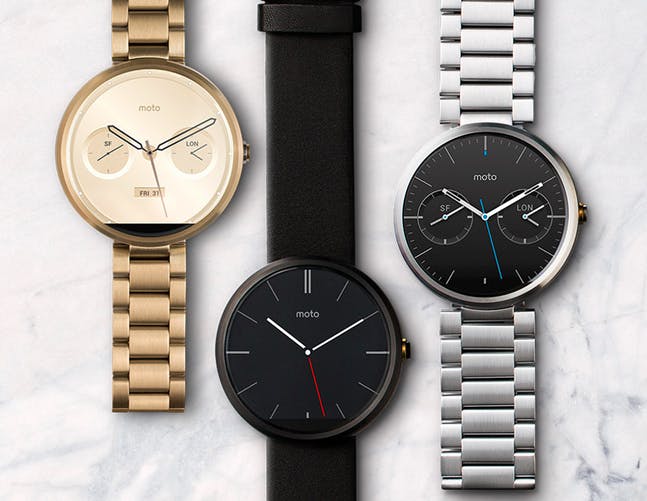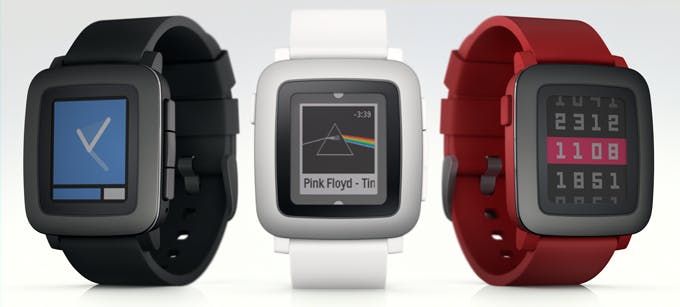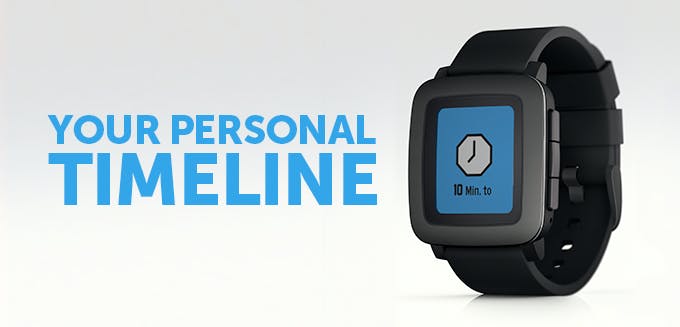Contrary to the belief of Internet commenters, first doesn’t matter all that much. Tech consumers have learned to be a little more patient and discerning when it comes to new devices—especially when Apple is late to the party.
Though Android Wear has been stacking devices running the operating system for wearables and Pebble has been steadily improving its crowdfunded smartwatch, Apple has now announced its arrival with the Apple Watch, coming April 24, 2015.
Now that all of the important attendants are present at the party, it’s time to dance. Apple has some good-looking partners, two of the most important being the Moto 360 and the Pebble Steel.
All about that bottom line
The moment everyone was waiting for today was the pricing announcement. The fact that the Apple Watch will come in many different varieties, including some that top the $10,000 mark, caused quite the uproar. But those premium styles aren’t the ones most people will be looking at. The Apple Watch will start at $350, a much more palatable price for the crowd that doesn’t own a private jet.
It’s still a bit of a jump from where most of the smartwatches are landing when it comes to retail price, though. The Moto 360, arguably the flagship model of the Android Wear family, comes in at $100 less, costing $250. The new model from Pebble, the Pebble Time Steel, will be priced at $300 but is available for a $50 discount to early Kickstarter backers. Take pretty much any model of smartwatch and put its price tag up against Apple’s, and the Apple Watch will range a little higher. Call it the Apple premium.
Style
There is a reason for Apple’s incredible range of prices on the Apple Watch: It comes in an incredible variety of styles. There are two different case sizes, six different finishes, and six unique bands that span three different collections: Apple Watch, Apple Watch Sport, and Apple Watch Edition. You’ll have to think about the Apple Watch a little differently than its competition because Apple is approaching things a little more like a typical watchmaker. Apple is a brand like Rolex is a brand, and all of these options are laid out so you can get the model that best fits your style.
Things are a little more limited when looking at the competition. The Moto 360 has less customization than its Moto X phone had. You can opt for a light, dark, or champagne finish to go with either a black or stone Horween leather band. The Moto 360 does have the added stylistic touch of a rounded screen as opposed to the square build of much of its competition, though it does still have that obnoxious black bar of unaccounted for space at the bottom.
The Pebble Time Steel is considerably more competitive in this regard, with three different finishes—silver, black, or gold—to pair with leather or stainless steel straps. Pebble also has the added benefit that styles don’t dramatically change its price.
The guts
It’s hard to argue that the Apple ecosystem is one of its biggest selling points. The Apple Watch will definitely feed off of the success of iOS, especially as the first sighting of the Apple Watch app will make its appearance in the update to iOS 8.2. The watch will require an iPhone 5 or higher for compatibility purposes.
The problem for the Moto 360 and Android Wear watches in general is the same one that Android faces as a whole: a fractured user base. Active Android devices are running versions spanning the latest 5.0 release all the way back to 2.2. The Moto 360 only works in tandem with Android 4.3 or higher, which is currently fewer than half of all devices are running. Of course it stands to argue that smartwatch early adopters are likely to be keeping up to date on their phones as well.
Pebble gets a nod for versatility, running its own software while remaining compatible with both iOS and Android devices. The new Timeline interface on the Pebble Time Steel is backwards compatible with its library of 6,000 apps—giving it a considerable leg up.
How long can it last?
There’s a different set of expectations for watches and smartphones when it comes to how long they last. It’s not uncommon for the battery on your smartphone to start flashing red by the end of the day. On your watch, though, you expect a significant amount of time between swapping out batteries.
The Apple Watch will get about 18 hours of use before it requires a charge. Tim Cook referred to that figure as “all day” battery life, pretty much right in line with where the Moto 360 sits. It’s kind of an awkward, no man’s land for usage—not quite a full day in actuality, but hopefully enough to not just turn your watch into a dead weight by the time you get off work. You’ll be charging every night no matter if you go Apple or Android.
Pebble is in a class of its own when it comes to this, claiming an unprecedented 10 day battery in its new Time Steel. The original lasted a week, so it’s not hard to imagine the company could stretch that out a bit further with its e-paper display, which eats up considerably less power than the LED screens of the Apple Watch and Moto 360.
Performance matters
Nothing else really matters if the watch doesn’t do what you want, right? There are some similarities between all of these watches, gleaning features from what came before and tweaking and modifying to fit their own system.
Apple’s new infatuation with “Kits” will play a major role in the Apple Watch, starting with the aptly named WatchKit. Most of the early Apple Watch apps won’t be totally native to the device, instead running off the iPhone and pushing notifications to the face of the watch itself. From there users can interact with the information in a couple different ways including Glance, which gives a brief look at the information so you process it quickly, and Smart Replies, which automatically generates your reply options to save you time. It may make adoption for app developers easier than building native to the system. We’ve already seen Uber, Twitter, Facebook, and many others on display for the system.
The Apple Watch will also hook up with Apple’s other kits, HealthKit and HomeKit, to put control over health and fitness services and home automation apps all on the wrist. It’ll also, of course, work with Apple Pay so you can pay off your latest purchase by waving your wrist over the credit card terminal.
The Moto 360 gets to make the most out of Android Wear, the version of Android made to be crammed onto the small screen of a watch face. The power of Google puts to use predictive features for figuring out what information you need at different times of day and presents that front and center. Google Fit, the answer to Apple’s HealthKit, keeps track of daily steps as well as workouts and activities. The app ecosystem is becoming more populated on the regular, with big names like Lyft and WhatsApp. Like the Apple Watch, connectivity to a smartphone gives the watch the ability to serve as the smaller surrogate to the primary device. It’s also where you’ll control things like your music player or your inbox and change watch faces.
Pebble has put a fair amount of time into rethinking its user interface, and the results are coming out with its new device. The new UI, called Timeline, connects everything from contacts to calendars, then organizes all of that information so you can view your day as a linear line: Scroll backward to check for a missed message or forward to see if you have any upcoming meetings.
The most recent upgrade to Pebble brings color to the e-paper screen, so apps are now able to be updated with a some vibrant splashes. Pebble is updating its own apps and its app and menu system to reflect this change and is encouraging other developers to do the same. Outside of just the aesthetic update Pebble has also improved how it handles content from apps, with glanceable content and a system for loading and caching apps dynamically.
So… which one?
Sorry, that’s on you. If you’re already ingrained in the Apple ecosystem, there’s probably no reason not to let the company’s grasp on you tighten around your wrist as well. You could go the Pebble route, but even its head start won’t make it feel as smooth as Apple’s own system.
Android Wear has the ability to leave Pebble behind as well, with a huge section of the smartphone market already using an Android phone.
But if you don’t have any major allegiances, then you need to ask yourself if durability and battery life are important. If the answer is yes, then the Pebble has a huge leg up on its big name competition.
Photo via REL Waldman/Flickr (CC BY 2.0)

